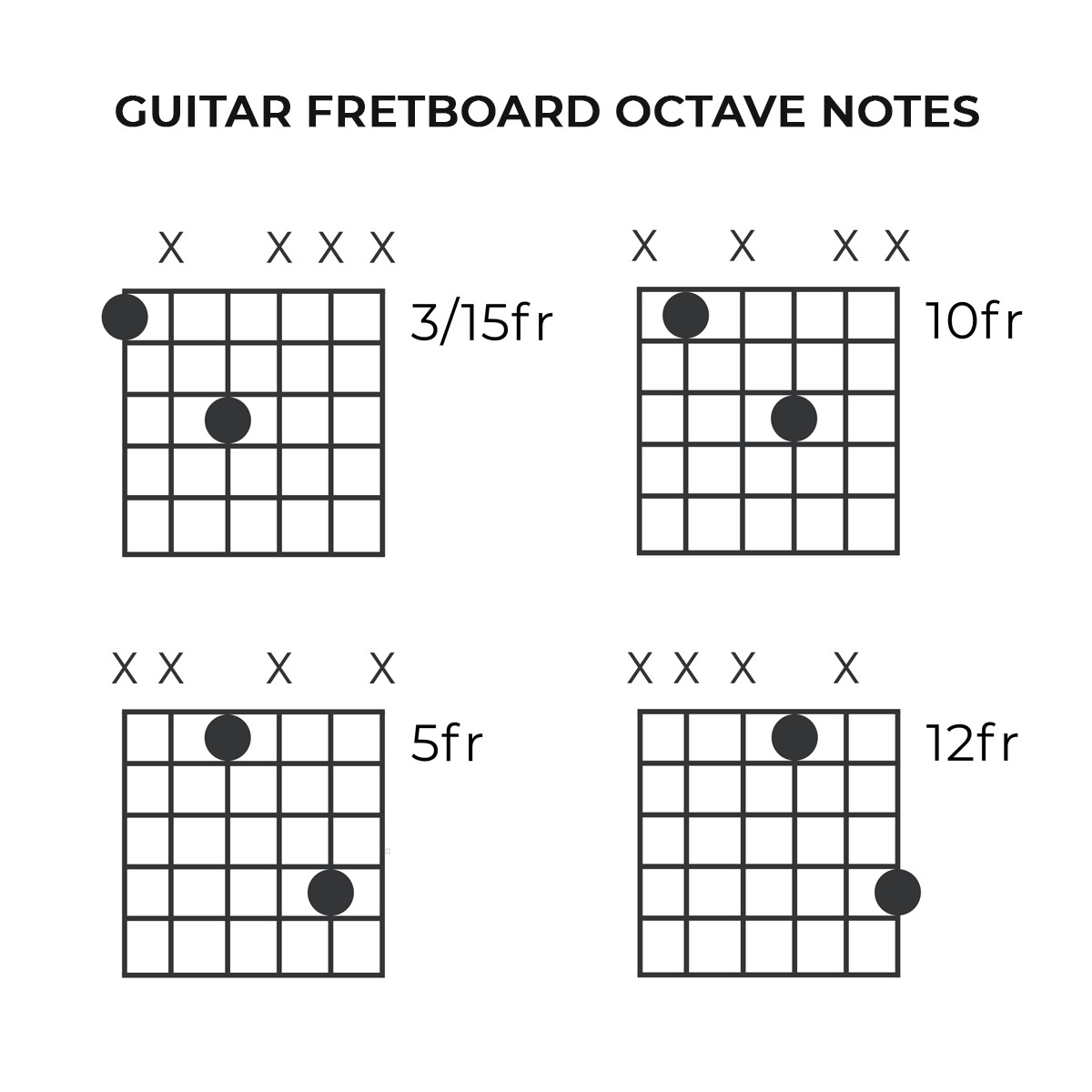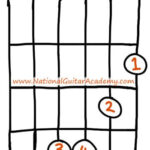For any aspiring guitarist, there comes a pivotal moment when the desire to move beyond basic chords and strumming takes hold. While learning songs through chord charts and tabs is a great starting point, truly elevating your guitar skills involves a deeper understanding of the instrument itself. One of the most impactful steps you can take to accelerate your progress is learning the notes on the guitar neck, often referred to as the fretboard. This knowledge is fundamental to grasping music theory, unlocking improvisation, and ultimately, becoming a more versatile and accomplished guitar player.
Embarking on the journey of learning the fretboard might seem daunting at first, but with the right strategies and a systematic approach, it becomes a manageable and rewarding endeavor. Let’s explore effective techniques to master the Guitar Neck Notes and transform your playing.
Decoding the Guitar Fretboard
Before diving into learning strategies, it’s essential to familiarize yourself with the layout of the guitar fretboard. The fretboard is essentially a map of musical notes, with each fret representing a half step in pitch. Understanding this structure is the first step in navigating the neck with confidence.
Take a look at the diagram below, illustrating the notes across the guitar fretboard:
 Guitar Fretboard Notes Diagram
Guitar Fretboard Notes Diagram
Image: A detailed guitar fretboard diagram displaying all notes across the neck, useful for guitarists learning fretboard notes.
You’ll notice some notes are labeled with two names, such as C#/Db or D#/Eb. This is due to musical notation conventions where notes “in-between” whole steps can be described as either a sharp (#) of the note below or a flat (b) of the note above. For example, the note between D and E can be called D sharp (D#) or E flat (Eb) – they are the same pitch, just named differently depending on the musical context.
Consider the 5th fret of the A string, which is a D note. Moving up two frets to the 7th fret brings you to an E. The note in between, at the 6th fret, can be perceived as either a D# (D raised by a half step) or an Eb (E lowered by a half step). Understanding this enharmonic equivalence is key to grasping music theory and fretboard navigation.
Strategy 1: Harness the Chromatic Scale
The chromatic scale is the bedrock of understanding notes on the guitar neck. It encompasses all 12 musical notes within an octave, moving in half steps. Starting on C, the chromatic scale ascends as follows:
C – C#/Db – D – D#/Eb – E – F – F#/Gb – G – G#/Ab – A – A#/Bb – B – C
This sequence repeats endlessly across the fretboard, with each fret representing one step in the chromatic scale.
So, how does this knowledge aid in learning the fretboard?
Pick any note as a starting point. Let’s say you locate G on the 3rd fret of the low E string. Now, imagine you want to find the note three frets higher, at the 6th fret of the same string. By recalling the chromatic scale, you know that three half steps up from G are G#, A, and A#. Therefore, the note at the 6th fret of the low E string is A#/Bb.
As each fret corresponds to a half step, memorizing the chromatic scale effectively unlocks the fretboard. Once you internalize this sequence, identifying notes becomes a matter of counting semitones from a known starting point. Practice playing the chromatic scale across different strings and positions to solidify this crucial pattern.
Strategy 2: Master Octave Shapes as Fretboard Landmarks
An octave represents the interval between one musical pitch and another with double its frequency. In simpler terms, an octave is the same note, but higher or lower in pitch. On the guitar fretboard, octave patterns provide visual and spatial relationships that significantly simplify note location.
For example, play the open D string. Then, locate the 12th fret on the same D string. Both are D notes, an octave apart. The 12th fret octave is exactly one octave higher in pitch than the open string.
These octave relationships are consistent across the fretboard. If you know that the note four frets above an open D string is F#/Gb, this pattern holds true for any D note on the neck. Locate the D note on the 3rd fret of the B string. Counting four frets up from there (to the 7th fret) will also land you on an F#/Gb.
Visualizing octave shapes is a powerful tool for fretboard mastery. Study the diagrams below to understand common octave patterns:
 Guitar Octave Notes
Guitar Octave Notes
Image: Guitar octave patterns diagram showing common shapes for locating octave notes across the fretboard, aiding visual learning of guitar neck notes.
By memorizing these shapes, you create mental landmarks on the fretboard. Practice playing octave shapes starting from different root notes to internalize these patterns and quickly locate notes across the neck.
Strategy 3: Divide and Conquer – String by String Learning
Learning the entire fretboard at once can feel overwhelming. A more manageable approach is to focus on memorizing notes string by string, starting with the lower strings. Many guitarists begin by mastering the notes on the low E and A strings.
Why start with these two strings? Because they are fundamental to chord construction, especially barre chords. Barre chords often root on either the low E or A string. Knowing that the 8th fret of the low E string is a C note, for instance, immediately tells you where to position your index finger for a C barre chord. Similarly, the 3rd fret of the A string is also a C, providing another anchor point for chord shapes.
Once you’ve confidently mapped out the notes on the low E and A strings, gradually expand your knowledge to the D, G, B, and high E strings. You’ll find that patterns emerge and your understanding of the fretboard deepens incrementally.
Interestingly, once you’ve learned the low E string notes, observe the high E string. You’ll notice a direct correlation: the notes on corresponding frets are the same, just two octaves higher. This mirroring effect can accelerate your learning process as you move to higher strings.
Strategy 4: Utilize Fret Markers as Visual Guides
Fret marker inlays (dots or other shapes) on the guitar neck are not just decorative; they serve as valuable visual landmarks. Standard fret markers are typically located at the 3rd, 5th, 7th, 9th, 12th, 15th, 17th, 19th, and 21st frets. The 12th fret often has a double marker to further highlight the octave position.
Associate these markers with specific notes. For example, the 3rd fret marker is often associated with the notes G (on E string) and C (on A string). The 5th fret marker aligns with A (on E string) and D (on A string), and so on.
Using fret markers as reference points breaks down the fretboard into visually digestible sections. They help you quickly orient yourself and estimate note positions without having to count from the open string each time.
Strategy 5: Embrace Short, Regular Practice Sessions
Consistency is paramount when learning guitar neck notes. Instead of marathon practice sessions that lead to burnout, opt for short, focused practice periods. Even 10-15 minutes of dedicated fretboard note practice each day can yield significant results over time.
Regular, brief sessions allow for better information retention and prevent overwhelm. Incorporate fretboard note exercises into your daily practice routine, even if it’s just for a few minutes at the start of your practice. This cumulative approach is far more effective than sporadic, lengthy cramming.
The Rewards of Fretboard Mastery
Learning the notes on your guitar neck is an investment that pays off handsomely. It’s the key that unlocks a deeper understanding of music and elevates your guitar playing to new heights. The benefits are multifaceted:
- Enhanced Music Theory Comprehension: Knowing fretboard notes is fundamental to understanding scales, chords, and musical intervals. It demystifies music theory and makes it practical on your instrument.
- Improved Improvisation Skills: Fretboard knowledge empowers you to improvise melodies and solos with intention and confidence. You can navigate the neck musically, rather than relying solely on patterns.
- Deeper Chord and Scale Knowledge: Understanding the notes within chords and scales allows you to construct your own voicings, analyze songs, and create more interesting musical arrangements.
- Faster Learning of New Material: With fretboard mastery, learning new songs, scales, and techniques becomes significantly faster. You can quickly grasp the musical structure and translate it to the guitar.
- Overall Musical Growth: Ultimately, knowing your guitar neck notes elevates your musicality. It transforms you from simply playing shapes to truly understanding the music you create.
Embark on Your Fretboard Journey
Learning the guitar fretboard is a journey, not a race. Be patient with yourself, take it step by step, and celebrate your progress along the way. By implementing these strategies and dedicating consistent practice time, you’ll unlock the secrets of the fretboard and witness a remarkable transformation in your guitar playing. Explore the fretboard, enjoy the process, and watch your musicality flourish.
Ready to take your guitar playing to the next level?
Play the songs you love and master your instrument with Yousician. Try Premium+ free for 7 days. Sign up and start your musical journey today.
Start your free trial


